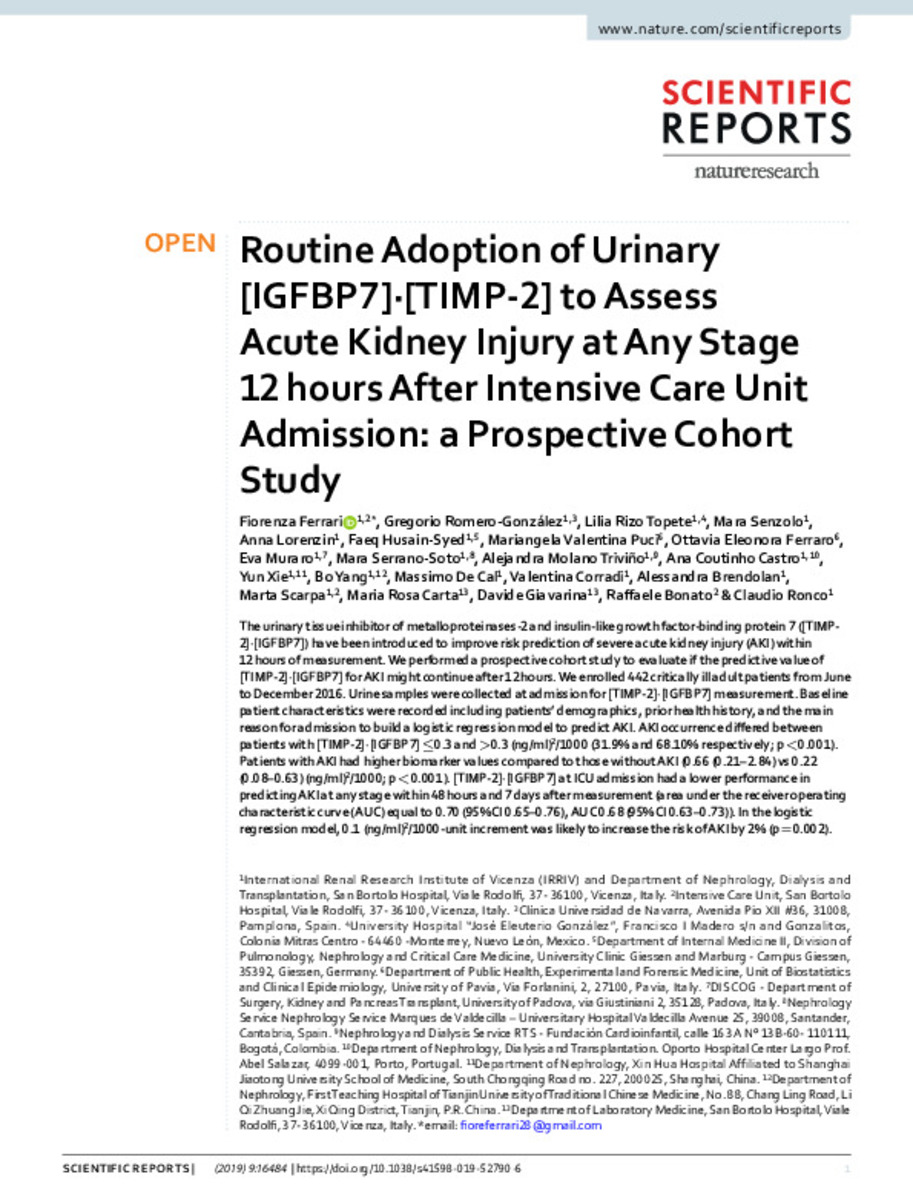Routine Adoption of Urinary [IGFBP7]∙[TIMP-2] to Assess Acute Kidney Injury at Any Stage 12 hours After Intensive Care Unit Admission: a Prospective Cohort Study
Palabras clave :
Materias Investigacion::Ciencias de la Salud::Urología y nefrología
Fecha de publicación :
2019
Editorial :
Springer Science and Business Media LLC
Nota:
This article is licensed under a Creative Commons Attribution 4.0 International License, which permits use, sharing, adaptation, distribution and reproduction in any medium or format, as long as you give appropriate credit to the original author(s) and the source, provide a link to the Creative Commons license, and indicate if changes were made
Cita:
Ferrari, F. (Fiorenza); Romero-González, G. (Gregorio); Rizo-Topete, L. (Lilia); et al. "Routine Adoption of Urinary [IGFBP7]∙[TIMP-2] to Assess Acute Kidney Injury at Any Stage 12 hours After Intensive Care Unit Admission: a Prospective Cohort Study". Scientific Reports. 9 (16484), 2019, 1 - 9
Aparece en las colecciones:
Estadísticas e impacto
0 citas en

0 citas en

Los ítems de Dadun están protegidos por copyright, con todos los derechos reservados, a menos que se indique lo contrario.







